Salvador Dali
(1904-1989)
The Extraordinary Life of Salvador
Dali
Salvador Felipe Jacinto Dali y Domenech
was born on May 11, 1904, in the small agricultural town of
Figueres, Spain, in the foothills of the Pyrenees, only sixteen
miles from the French border in the principality of Catalonia.
The son of a prosperous notary, he spent his boyhood in Figueres
and at the family's summer home in the coastal fishing village of
Cadaques. His parents built his first studio in Cadaques and for
most of his adult life he lived in a fantastic villa in nearby
Port Lligat.
The young Dali attended the San
Fernando Academy of Fine Arts in Madrid. Early recognition of
Dali's talent came with his first one-man show, held in Barcelona
in 1925. He became internationally known when three of his
paintings, including the Basket of Bread (now in
the Salvador Dali Museum Collection) were shown in the third
annual Carnegie International Exhibition in Pittsburgh in 1928.
The following year Dali went to Paris
where he also held a one-man show. He also joined the Paris
Surrealist Group. That same year Dali met Gala Eluard when she
visited him in Cadaques with her husband, the French poet Paul
Eluard. She became Dali's lover, muse, business manager, and
chief inspiration. In 1934 Dali and Gala were married in a civil
ceremony and made their first trip to America.
Dali emerged as a leader of the
Surrealist movement and his painting, Persistence of Memory
(1931) is still one of the best known surrealist works. But, as
war approached, the apolitical Dali clashed with the Surrealists
and he was expelled during a trial conducted by the group in
1934. Although he did exhibit works in international surrealist
exhibitions throughout the decade, asserting that: "le
Surrealisme c'est moi," by 1940 he was ready to move into a
new era, one that he termed "classic."
Just prior to World War II, Dali and
Gala fled from Europe, spending 1940-48 in the United States. The
subsequent decades were very important years for the artist. The
Museum of Modern Art in New York gave Dali his major
retrospective in 1941. In the years following 1949 Dali produced
his 18 large canvases, many concerning scientific, historical or
religious themes. Among the best-known of these works are Christ
of St. John of the Cross, in Glasgow, Scotland; The
Hallucinogenic Toreador and The Discovery of
America by Christopher Columbus in the Museum's
collection; and The Sacrament of the Last Supper in
the collection of the National Gallery in Washington D.C. Also at
this time, Dali returned to the Catholic faith of his youth and
he and Gala were married in a second ceremony in 1958, this time
in a chapel near Girona, Spain.
In 1974 Dali opened the Teatro Museo
Dali in Figueres. This was followed by retrospectives in Paris
and London at the end of the decade. After Gala's death in 1982,
Dali's health began to fail. It deteriorated further after he was
severely burned in a fire in Gala's castle in Pubol, Spain, in
1984. Two years later, a pacemaker was implanted. Much of the
years 1980-89 were spent in almost total seclusion, first in
Pubol and later in his private room in the Torre Galatea,
adjacent to the Teatro Museo Dali.
On January 23, 1989, Salvador Dali died
in a hospital in Figueres from heart failure and respiratory
complications. (Source: The Official Site of Salvador Dali Museum - St.
Petersburgh, FL. )
The Gallery
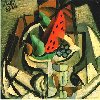
|
Stil Life: Sandia (1924) - 55 Kb |

|
The First Days of Spring (1929) - 33 Kb |
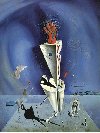
|
Aparatus in Hand (1927) - 36 Kb |

|
Illumined Pleasures (1929) - 49 Kb |
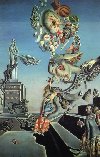
|
Lugubrious Game (1929) - 117 Kb |

|
The Persistence of Memory (1931) - 45 Kb |

|
Diurnal Fantasies (1932) - 23 kB |
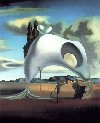
|
Atavistic Vestiges After the Rain (1934) - 34 Kb |
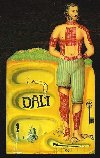
|
Surrealist Poster (1934) - 32 Kb |
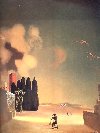
|
Enigmatic Elements in the Landscape (1934) - 57 Kb |

|
The Invention of the Monsters (1937) - 46 Kb |

|
The Endless Enigma (1938) - 44 Kb |

|
Philosopher Illuminated by the Light of the Moon and
the Setting Sun (1939) - 44 Kb |
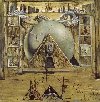
|
Juliet's Tomb (1942) - 55 Kb |

|
Sentimental Colloquy (1944) - 63 Kb |
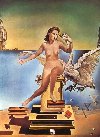
|
Leda Atomica (1949) - 51 Kb |
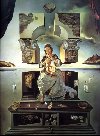
|
The Madonna of Port Lligat (1950 ) - 79 Kb |
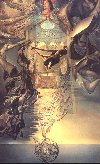
|
Asummpta Corpuscularia Lapislazulina (1952) - 77 Kb |

|
The Disintegration of Persistence of Memory
(1952-1954) - 37 Kb |
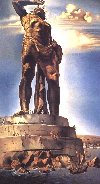
|
The Colossus of Rhodes (1954) - 49 Kb |

|
Rhinocerotic Disintegration of Illissus of Phidias
(1954) - 47 Kb |

|
Two Adolescents (1954) - 29 Kb |

|
The Sacrament of the Last Supper (1955) - 51 Kb |
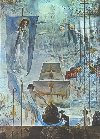
|
The Discovery of America by Christopher Columbus
(1959) - 79 Kb. Strange... This one was painted in the
same year when my youngest brother was born. Later he
discovered America and moved to live there. Sad story... |
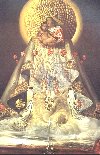
|
The Virgin of Guadalupe (1959) - 114 Kb |
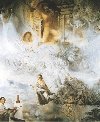
|
The Ecumenical Council (1960) - 49 Kb |
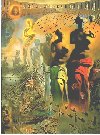
|
The Hallucinogenic Toreador (1969-1970) - 46 Kb |
Collected
by Andrey Kirkov, © 1999
introduction | some more words about me | music | gallery




























